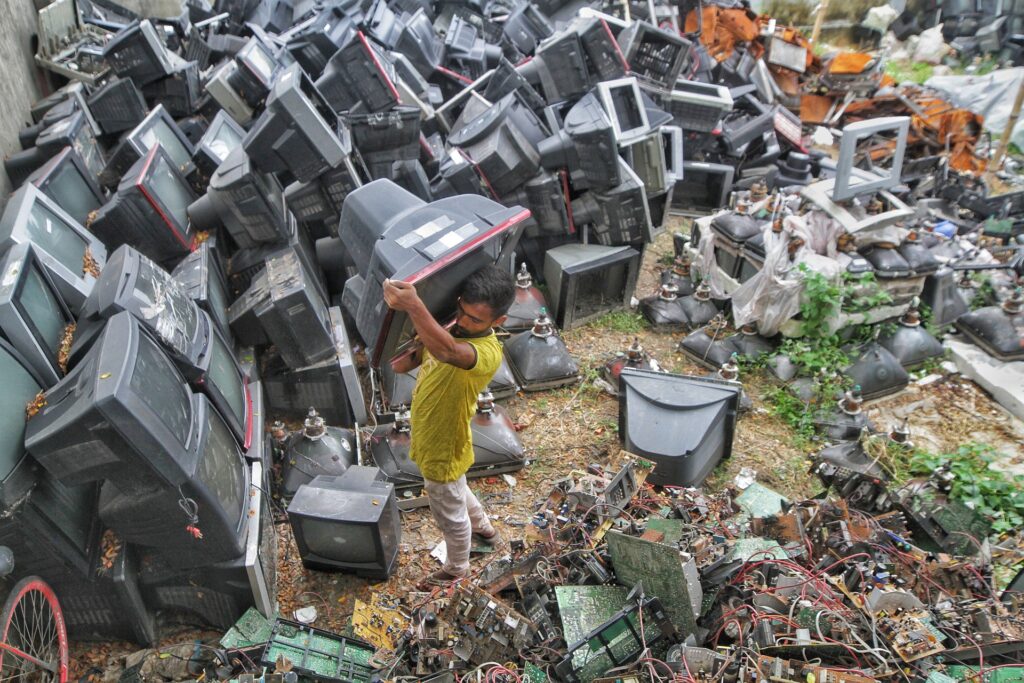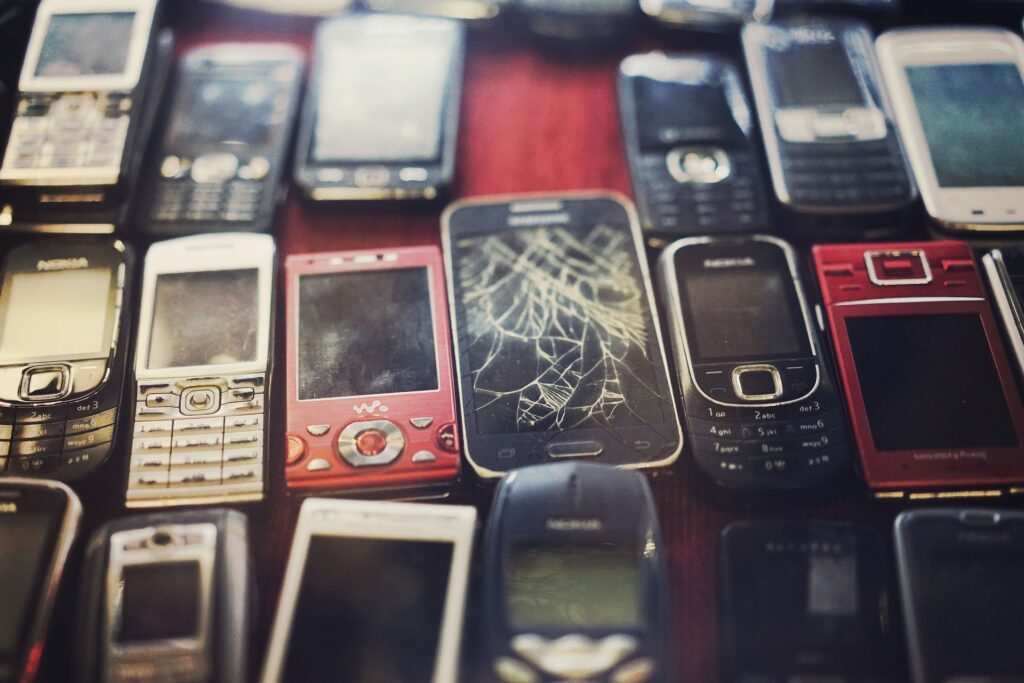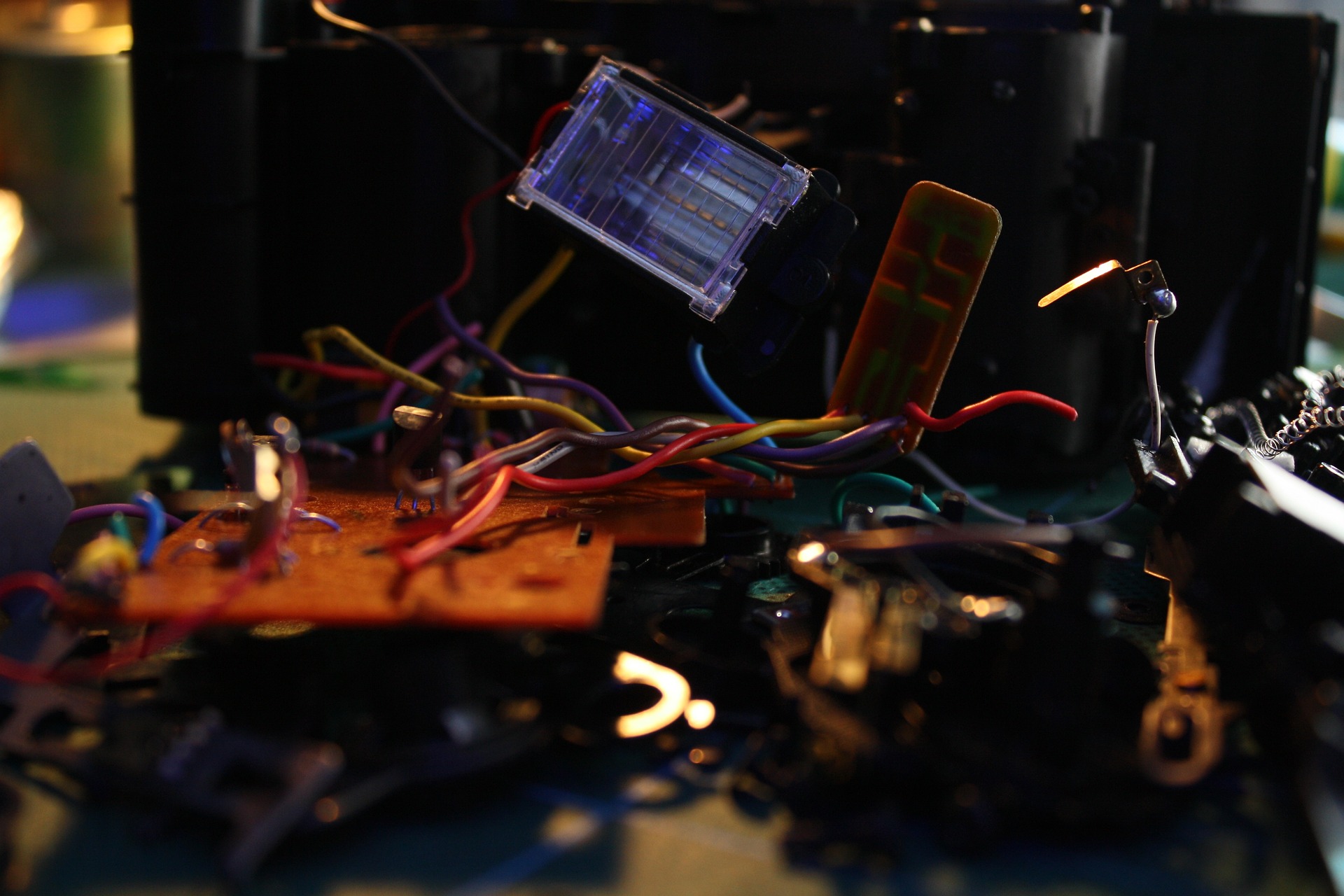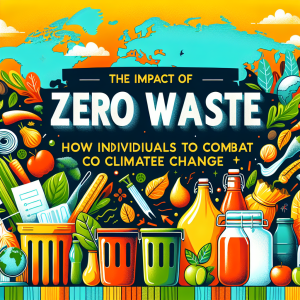In a world driven by technological advancements, our reliance on electronic devices has reached unprecedented heights. From smartphones to laptops, and from kitchen appliances to entertainment systems, electronics have become an integral part of our lives. However, this rapid consumption has given rise to a major challenge – what to do with these devices once they’ve outlived their usefulness? This is where an efficient electronics recycling process steps in, offering a sustainable solution to our e-waste dilemma.
Introduction: The Digital Dilemma
In the age of innovation, our lives are inextricably tied to gadgets that promise convenience and connectivity. But there’s a hidden side to this digital revolution: electronic waste. Mountains of discarded devices lead to environmental degradation, making responsible disposal more crucial than ever. Enter the Electronics Recycling Process, a systematic journey that breathes new life into discarded gadgets while saving our planet.
Introducing the Importance of the Electronics Recycling Process
In a world where technological progress is both our greatest asset and challenge, the significance of the Electronics Recycling Process emerges as a beacon of responsibility. The relentless pace of innovation has us captivated by the latest gadgets, but it’s crucial to recognize the environmental impact of this digital age. The Electronics Recycling Process isn’t merely a series of actions; it’s a profound commitment to the planet’s well-being. By delving into this intricate process, we unveil a journey that transforms discarded devices into a force for positive change, all while underlining our role in shaping a sustainable future.
Setting the Tone for an Informative Yet Engaging Discussion
Amidst the whirlwind of our tech-centric lives, understanding the intricacies of the Electronics Recycling Process might seem like uncharted territory. However, fear not, for what lies ahead is a compelling expedition into the heart of responsible e-waste management. Brace yourself for a conversation that doesn’t just inform but captivates. We’ll navigate through dismantling, material recovery, and innovation, unraveling the threads of a narrative that turns waste into opportunity. Prepare to embark on a journey that educates, entertains, and empowers you to make a positive impact through the world of electronics recycling.
Understanding Electronics Recycling
When the glow of your once-beloved gadget begins to fade, the temptation to toss it into the trash may arise. But pause for a moment. Electronics recycling isn’t just a buzzword; it’s a movement. E-waste contains toxic substances like lead, mercury, and cadmium, which can contaminate soil and water if left unchecked. By opting for recycling, you’re not only preventing environmental harm but also reclaiming valuable materials like gold, silver, and rare earth metals that can be repurposed.
Explaining the Significance of Proper Electronics Disposal
The gravity of the Electronics Recycling Process cannot be overstated, as it stands as a bulwark against the escalating tide of e-waste. Proper disposal isn’t merely a matter of convenience; it’s a moral imperative that safeguards our planet and its inhabitants. With every device we discard, we hold the power to either contribute to the growing problem of electronic waste or be part of the solution. By delving into the intricacies of responsible electronics disposal, we unlock the potential to minimize the adverse consequences of our digital age and pave the way for a more sustainable tomorrow.
Highlighting the Environmental Impact of E-Waste
The ubiquity of electronics has revolutionized our lives, but the flip side is an ecological challenge that demands our attention. The Electronics Recycling Process sheds light on the formidable environmental impact of e-waste – a complex interplay of pollutants that can contaminate soil, water, and air. As we upgrade our gadgets, mountains of obsolete devices accumulate, leaching hazardous materials into the environment. By raising awareness about the environmental repercussions of unchecked e-waste, we emphasize the critical role that recycling plays in curbing pollution, conserving resources, and ensuring the well-being of our fragile ecosystem.

Step-by-Step Breakdown of the Recycling Process
1. Collection and Sorting: The E-Waste Odyssey
Imagine your old devices embarking on a new journey. At the heart of the Electronics Recycling Process, collection and sorting play a pivotal role. The process starts with a simple drop-off or pickup, but behind the scenes, a choreographed dance of categorization begins. Different types of electronics are sorted to ensure efficient dismantling and recycling.
Detailing the Initial Collection Process for E-Waste
The journey of the Electronics Recycling Process begins with the crucial step of collecting electronic waste. This involves individuals, businesses, and organizations participating in the responsible disposal of their devices. Collection centers, drop-off points, and scheduled pickups are orchestrated to gather the diverse array of electronics that await transformation.
Explaining the Sorting of Different Electronic Items
Once amassed, the collected e-waste undergoes a meticulous sorting process. This step is akin to assembling a jigsaw puzzle, with experts categorizing various electronic items based on their type, size, and components. This preliminary classification ensures efficient dismantling and subsequent recycling, setting the stage for a well-orchestrated journey within the Electronics Recycling Process.
2. Dismantling and Component Extraction: The Teardown Tango
Now it’s time for the grand teardown. Skilled technicians disassemble your devices, extracting individual components with precision. It’s like a high-tech autopsy that dissects gadgets into their elemental parts. From circuit boards to wires, each fragment is set aside for the next phase of the process.
Discussing the Dismantling of Electronics into Individual Components
As the Electronics Recycling Process advances, skilled technicians engage in the intricate art of dismantling. This involves carefully disassembling electronics into their fundamental components. Circuit boards, batteries, screens, and other parts are methodically separated, laying the foundation for the subsequent stages of material recovery and recycling.
Highlighting the Extraction of Valuable Materials like Metals and Plastics
Within the heart of discarded electronics lies a treasure trove of valuable resources. The journey of the Electronics Recycling Process includes the extraction of precious metals such as gold, silver, and copper from components like circuit boards. Additionally, plastics are salvaged for repurposing, creating a loop of sustainability that minimizes waste and conserves finite resources.
3. Material Recovery and Refining: The Alchemical Encore
In a realm reminiscent of alchemy, the discarded materials undergo a transformation. Precious metals are recovered through techniques like smelting, while plastics find new life as raw materials for various products. This stage showcases the true magic of recycling – turning what was once waste into valuable resources.
Explaining the Processes Used to Recover Precious Metals and Other Reusable Materials
Within the intricate dance of the Electronics Recycling Process, recovery takes center stage. Once components are dismantled, ingenious methods are employed to retrieve precious metals and other reusable materials. These reclaimed resources serve as the building blocks for new products, contributing to a sustainable cycle of resource utilization.
Mentioning Techniques Such as Smelting, Refining, and Purifying
In the grand orchestra of electronics recycling, techniques like smelting, refining, and purifying emerge as the virtuoso players. Smelting melts down materials to extract metals, refining fine-tunes their quality, and purifying ensures their cleanliness. These harmonious processes epitomize the transformative journey that reshapes discarded components into valuable raw materials once more.
4. Safe Disposal of Hazardous Components: The Eco-Friendly Farewell
Every story must have its antagonist, and in the world of electronics, hazardous components take on that role. But worry not, for even these antagonists meet their eco-friendly end. Batteries are carefully neutralized, and toxic chemicals are safely processed. The Electronics Recycling Process ensures that the curtain falls on this tale without harming the environment.
Emphasizing the Proper Handling of Hazardous Materials like Batteries and Chemicals
In the choreography of the Electronics Recycling Process, a delicate pas de deux is performed with hazardous materials. Batteries and chemicals, often lurking within devices, demand meticulous attention. Their safe removal safeguards workers’ well-being and prevents environmental contamination, underscoring the commitment to responsible disposal.
Discussing the Methods Used to Dispose of These Components Safely
As the curtain falls on the Electronics Recycling Process, a finale of safety and environmental stewardship unfolds. Hazardous materials are not discarded recklessly; instead, they are subjected to specialized methods. Through secure containment, neutralization, or controlled disposal, the process ensures that even the most challenging components are managed without compromising our surroundings.
Benefits of Efficient Electronics Recycling
By choosing the path of electronics recycling, you become an unsung hero in the fight against e-waste. Picture this: landfills shrinking, pollution decreasing, and resources replenishing. Not only does recycling reduce the strain on natural resources, but it also curbs the release of harmful substances, safeguarding our ecosystems for generations to come.
Role of Technology in Modern Recycling
In the ever-evolving landscape of electronics recycling, technology emerges as a protagonist. Innovations like advanced sorting algorithms and AI-powered processing lines streamline the process, maximizing efficiency. It’s a synergy of the digital and the tangible, working hand in hand to tackle the e-waste challenge.
The Human Element: Workers and Recyclers
Behind the scenes of the Electronics Recycling Process, there’s a cast of dedicated individuals. These unsung heroes work tirelessly to disassemble, extract, and refine. Their efforts ensure that each gadget’s story doesn’t end in a landfill but continues as a resource for the future. This is a salute to those who bring the process to life.
Challenges in Electronics Recycling
As with any noble endeavor, challenges abound. E-waste export, lack of awareness, and improper disposal practices stand as formidable foes. The Electronics Recycling Process faces these hurdles head-on, underscoring the need for education, regulation, and consumer responsibility.
Tips for Individuals and Businesses
1. Sustainable Consumption: Less Is More
Encouraging Mindful Purchasing and Extended Product Use
It’s easy to be seduced by the latest technological marvels, but it’s essential to pause and think before making a purchase. In the context of the Electrical Recycling Process, each consumer’s choices can significantly impact the environment. When we make mindful decisions to buy electronics that we genuinely need and will use for an extended period, we contribute to less waste in the long run.
This notion goes beyond the purchase point; it also involves taking care of your devices to extend their lifecycles. Regular software updates, protective cases, and other forms of maintenance can keep your gadgets functioning for years. This not only delays their entry into the Electrical Recycling Process but also gives you more value for your money, making this a win-win strategy for both consumers and the planet.
2. Proper Disposal: Navigating the Recycling Maze
Providing Suggestions for Finding Certified Recycling Centers
The end of your device’s lifecycle doesn’t necessarily mean the end of its utility. When disposing of electronic waste, it’s crucial to go the extra mile to find a certified recycling center. Certified centers comply with environmental laws and regulations, ensuring that your devices are dismantled or repurposed in a way that minimizes environmental impact.
Before dropping off your old electronics, do some research to find a reputable facility where the Electrical Recycling Process is carried out responsibly. A quick online search, a visit to your local government’s environmental webpage, or even a phone call can provide this information. By making sure your old devices are processed correctly, you’re doing your part in sustaining a greener planet.
3. Donation and Reuse: Passing the Torch
Highlighting the Option of Donating Functional Electronics
While the Electrical Recycling Process plays a vital role in minimizing e-waste, donation is another avenue that shouldn’t be overlooked. If your device is still functional but simply no longer meets your needs, consider donating it to a charitable organization or an individual who could benefit from it. Schools, nonprofits, and community centers often accept functional electronics and put them to good use, thus further extending the device’s lifecycle.
The Electrical Recycling Process values the concept of ‘reuse’ highly, as it eliminates the need for recycling and prevents functional gadgets from turning into waste. So, the next time you’re about to toss out an old phone or laptop, pause and consider whether it could serve a higher purpose elsewhere.
By following these guidelines, you can make responsible choices in the lifecycle of your electronic devices, from mindful purchasing to proper disposal or donation.
Conclusion: Crafting a Greener Tomorrow
The narrative woven around the Electronics Recycling Process is not just one of technological reformation but also of environmental consciousness, ethical decision-making, and societal change. As we adapt and evolve in an increasingly digital age, the choices we make today will echo in the long-term health of our planet. The notion of recycling electronics is more than a matter of disposal—it’s an ethical, environmental, and civic duty.
Summarizing the Key Takeaways from the Article
This guide has pulled back the curtain on the Electronics Recycling Process, revealing how each choice—from sustainable consumption to responsible disposal—plays a pivotal role in environmental conservation. We’ve ventured into the multi-faceted world of electronics recycling, starting from mindful purchasing to finally bidding adieu to our devices in the most responsible manner possible. Along the way, we’ve demystified the process that transforms what could be harmful waste into opportunities for re-use, donation, or responsible recycling, thereby conserving valuable resources and reducing our carbon footprint.
By understanding the lifecycle of our devices, we are empowered to make choices that go beyond immediate convenience. We can extend the longevity of our electronics through maintenance and software updates, responsibly recycle them through certified centers, or give them a second life through donation. Each of these routes enriches the story of the Electronics Recycling Process, highlighting our ability to pivot from passive consumers to active, responsible participants in a larger ecological narrative.
Reinforcing the Importance of Responsible Electronics Recycling
Our understanding of the Electronics Recycling Process cannot end as mere knowledge; it must translate into action for it to bring about meaningful change. The choices we make, as consumers or business entities, aren’t isolated; they reverberate through ecosystems and communities, affecting current and future generations. When we choose to recycle, we are actively contributing to a vision of the world that values sustainability over disposability, and responsibility over neglect.
The significance of the Electronics Recycling Process rests not just on the shoulders of regulatory bodies or recycling facilities, but on each one of us. It’s a community effort that calls for enlightened consumerism, conscientious disposal, and a collective commitment to lessening our environmental impact. It serves as both a roadmap and a call to arms, prompting us to be the architects of a future where technology and nature exist in harmonious balance.
In conclusion, the Electronics Recycling Process is a vital chapter in the ongoing story of our relationship with the digital world and the natural environment. By embracing its principles, we not only contribute to a cleaner, greener world but also pave the way for technological innovation that is in sync with ecological balance. It’s not just a choice; it’s a legacy we leave for the generations that follow. Let’s craft that greener tomorrow, today.

FAQs
How can I find a trustworthy electronics recycling center near me?
To locate a reliable electronics recycling center nearby, search online directories, inquire with local waste management, or check manufacturer programs for drop-off locations in the Electronics Recycling Process.
Are there any electronic items that can’t be recycled?
While many electronic items can be recycled through the Electronics Recycling Process, items like CRT monitors and older electronics with harmful materials might need specialized handling.
Can I recycle old electronics at home, or is professional recycling necessary?
While recycling at home is possible for certain electronics, professional recycling ensures proper disposal in the Electronics Recycling Process. Check local regulations and opt for certified centers for best results.
What precautions are taken to protect my personal data during the recycling process?
Trusted recycling centers prioritize data security in the Electronics Recycling Process, wiping or destroying data-bearing components to safeguard personal information.
How can businesses integrate efficient electronics recycling into their operations?
Businesses can embrace efficient electronics recycling by partnering with certified recycling providers, implementing e-waste collection points, and educating employees on responsible disposal within the Electronics Recycling Process.


